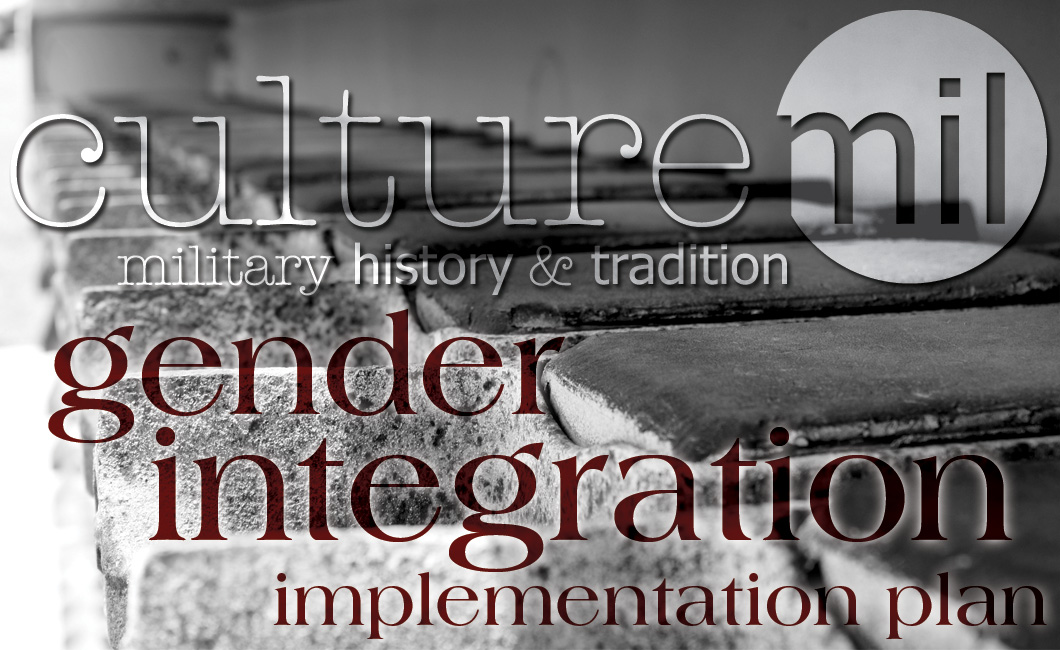- Updating physical and administrative screening standards
- Managing talent to select, train, and promote the best qualified Soldiers
- Building integrated units
- Educating Soldiers and leaders and communicating on how gender integration increases the readiness of the Army
- Continually assessing integration strategies to successfully posture the force
- https://www.army.mil/article/163980/Army_outlines_gender_integration_implementation_plan
- https://www.army.mil/standto/archive_2016-03-10
Written by Jenifer Chrisman on September 12, 2016.
“We’re not going to turn our back on 50 percent of the population. We are opening up every occupation to women.”
– Acting Secretary of the Army Patrick J. Murphy
On March 10, 2016, the Army publicized the Secretary of Defense’s December 3, 2015, decision to integrate women into all occupational specialties based on individual capability rather than excluding based on gender. According to army.mil’s Stand-To! The Official Focus of the Army:
What is it?
The U.S. Army’s Gender Integration Implementation Plan is the department’s detailed approach for integrating women into all military occupational specialties (MOSs). This paves the way for qualified female Soldiers to serve in the Infantry, Armor, and Special Forces.
Beginning this year, female officers will be able to branch as Infantry and Armor officers. The “leader first” approach will be followed by assignment of female enlisted Soldiers to operational units with gender integrated leadership.
What has the Army done?
The Army is implementing full integration through five lines of effort:
What continued efforts are planned for the future?
An incremental and phased approach by leaders and Soldiers who understand and enforce gender-neutral standards will ensure successful integration of women across the breadth and depth of our formations. The Secretary of Defense’s Dec. 3, 2015, decision opened an additional 220,000 current positions to women. As the department continues modernizing and innovating to stay ahead of future threats, Army senior leaders will develop policies and set conditions to recruit and retain the best people.
Why is it important to the Army?
Under the new policies, all Soldiers will have the opportunity to serve in any occupational specialty based on their individual capabilities and the needs of the Army, allowing the Army to recruit Soldiers and leaders from a larger pool of qualified personnel. This historic step reaffirms the Army’s plan to cultivate a climate of trust and respect in which all people are able to thrive and achieve their full potential and are postured for success with viable career paths.
Since the decision was made nine occupations and more than 95,000 positions have been opened to women, including three female Soldiers completing Army Ranger School. This effort, which sets conditions and develops policies to recruit and retain the best people is “pretty historic,” according to Acting Secretary of the Army Patrick J. Murphy.
Sources:



